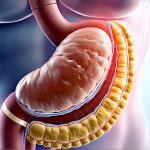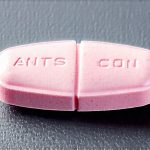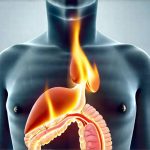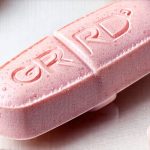The discomfort following a meal – that familiar bloating, burning sensation, even nausea – is something most people experience at one time or another. Often, we label it simply as “indigestion” and reach for an antacid, assuming it’s just something we ate or perhaps stress getting the better of us. While indigestion is a very common complaint, attributing every instance to this broad category can be misleading, and potentially delay proper diagnosis if the underlying cause is more complex. Many individuals are unknowingly living with bile reflux – a condition distinctly different from typical acid reflux, yet often mimicking its symptoms so closely that it’s frequently misidentified as simple indigestion or even heartburn. This leads to ineffective self-treatment and prolonged suffering because over-the-counter remedies aimed at neutralizing stomach acid offer little relief when the issue originates elsewhere.
Understanding the digestive process is key to appreciating why bile reflux can be so easily confused with indigestion. Our bodies are remarkably complex systems, and what appears as a simple upset stomach might actually involve multiple interacting organs and fluids. Indigestion typically relates to issues within the stomach itself – perhaps slow digestion, overeating, or sensitivity to certain foods – resulting in discomfort that feels like fullness, bloating, or burning. Bile reflux, however, stems from an issue higher up the digestive tract, involving the backflow of bile into the stomach and sometimes even the esophagus, creating a different kind of irritation with unique characteristics. Recognizing these differences is crucial for seeking appropriate help and finding lasting relief.
The Distinct Nature of Bile Reflux
Bile is a fluid produced by the liver that aids in the digestion of fats. It’s stored in the gallbladder and released into the small intestine when we eat fatty foods. This process usually works seamlessly, but problems arise when bile backs up from the duodenum (the first part of the small intestine) into the stomach – and occasionally even further up into the esophagus. Unlike stomach acid reflux (GERD), where acidic contents rise upwards, bile reflux involves a different irritant: bile salts themselves. These salts are highly alkaline, meaning they have a high pH, which is counterintuitive given that many treatments for “indigestion” aim to neutralize acidity. This alkalinity can be just as irritating – and sometimes more so – than acid, causing a distinct burning sensation and other uncomfortable symptoms.
The reason bile reflux is often missed stems from its overlapping symptom profile with both indigestion and acid reflux. Common symptoms include: – A burning sensation in the upper abdomen or chest (often described differently than heartburn) – Frequent burping – Nausea and vomiting (sometimes with a bitter or sour taste, although less commonly “sour” than acid reflux) – Bloating and abdominal discomfort – Diarrhea – bile salts can disrupt normal bowel function. This ambiguity makes self-diagnosis difficult, and even healthcare professionals may initially assume the problem is related to acidity without further investigation. Furthermore, many individuals with bile reflux don’t experience typical heartburn symptoms, making it harder to differentiate from general indigestion. Understanding why acid reflux often accompanies hormonal fluctuations can help clarify these overlapping conditions.
It’s important to note that bile reflux can occur without gallbladder issues. While gallbladder removal surgery can sometimes contribute to bile reflux (as it alters the flow of bile), it is not a prerequisite for developing the condition. Other factors contributing to bile reflux include: – Structural abnormalities in the duodenum or pylorus (the valve between the stomach and small intestine) – Previous gastric surgeries – Delayed gastric emptying – when food stays in the stomach too long, increasing the chance of backflow – Certain medications. The complexity of these underlying causes highlights why a thorough evaluation is necessary to determine the root problem and tailor treatment accordingly.
Identifying Bile Reflux: Symptoms Beyond the Usual
While general abdominal discomfort is common to both indigestion and bile reflux, paying attention to specific characteristics can help differentiate between the two. One key difference lies in the timing of symptoms. Indigestion often occurs shortly after eating, especially with large or fatty meals. Bile reflux, however, may be more noticeable several hours after a meal, sometimes even at night. This is because it takes time for bile to travel back up from the duodenum and irritate the stomach lining. Also, the burning sensation associated with bile reflux often feels different than typical heartburn; it’s frequently described as a deeper, more persistent burn that doesn’t respond well to antacids.
Another telling sign is the presence of frequent burping, which can be accompanied by a bitter or metallic taste in the mouth, even if acid isn’t involved. This is due to bile salts being forced upwards into the esophagus. Diarrhea is also more common with bile reflux than typical indigestion because bile salts disrupt normal bowel function and fat absorption. Furthermore, individuals experiencing bile reflux may find that they develop a tolerance to antacids over time, as these medications do nothing to address the underlying alkaline irritant. The absence of relief from acid-reducing medication should raise suspicion about bile reflux and prompt further investigation. It’s also wise to explore why reflux might be mistaken for allergic reactions.
Finally, it’s important to consider other associated symptoms. Some people with bile reflux experience fatigue, unexplained weight loss, or a feeling of fullness even after eating small amounts of food. These symptoms could indicate more serious underlying issues, emphasizing the importance of seeking medical attention if you suspect bile reflux is present and isn’t responding to standard treatments for indigestion. A healthcare professional can perform specific tests – such as an endoscopic examination with biopsies – to confirm the diagnosis and rule out other potential causes of your discomfort.
Diagnostic Tools & When To Seek Help
Diagnosing bile reflux can be challenging because conventional diagnostic methods primarily focus on acid reflux. Standard acid reflux testing often doesn’t accurately detect bile backflow, leading to misdiagnosis. Endoscopy with biopsy is currently considered the most reliable method for identifying bile reflux. During an endoscopy, a thin, flexible tube with a camera is inserted into the esophagus, stomach, and duodenum to visually inspect the lining for signs of irritation or damage caused by bile salts. Biopsies can then be taken to examine the tissue under a microscope and confirm the presence of bile acids.
Beyond endoscopy, other diagnostic tools may assist in evaluating potential contributing factors. A gastric emptying study measures how quickly food moves through your digestive system. Delayed gastric emptying can increase the risk of bile reflux by allowing more time for backflow from the duodenum. A HIDA scan (hepatobiliary iminodiacetic acid scan) assesses gallbladder function and bile flow, which can help identify potential issues with bile transport or storage. However, it’s important to understand that these tests don’t directly measure bile reflux itself; they provide information about related digestive processes that may contribute to the condition. Modern tools for monitoring acid reflux over time can assist in overall assessment.
When should you seek medical attention? If your symptoms of “indigestion” are persistent, severe, or not responding to over-the-counter remedies – especially if accompanied by diarrhea, fatigue, unexplained weight loss, or difficulty swallowing – it’s crucial to consult a healthcare professional. Don’t self-diagnose and delay proper evaluation. Early diagnosis and appropriate management can significantly improve your quality of life and prevent potential complications associated with chronic bile reflux. Remember that persistent digestive issues are rarely “just indigestion,” and deserve thorough investigation. For athletes, considering gut testing matters to rule out other causes. If stress is a factor, remember why acid reflux often gets worse during stressful periods. Additionally, diagnostics often recommended for women with gut changes may be beneficial.


















